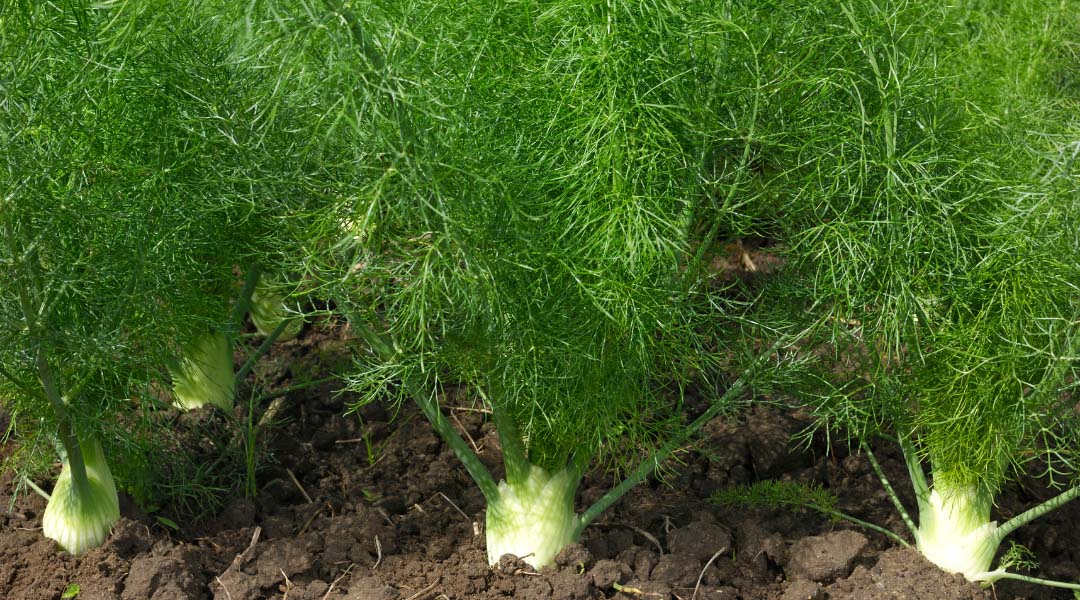Fennel (Foeniculum vulgare) is a versatile and aromatic herb that has been cherished for centuries, not only for its culinary uses but also for its medicinal properties. Native to the Mediterranean region, fennel is a member of the carrot family and has a distinctive anise-like flavor, making it a popular choice in a variety of dishes, from salads to soups to roasted meats. Growing fennel at home is a rewarding experience, offering you a continuous supply of fresh, organic herbs and vegetables, free from harmful chemicals and pesticides.
Types of Fennel
When it comes to growing fennel, it’s essential to choose the right variety based on your intended use. There are two primary types of fennel:
Bulb Fennel (Florence Fennel): This variety is cultivated for its bulbous stem base, which is crisp, slightly sweet, and often used in salads or roasted dishes.
Herb Fennel (Common Fennel): This type is primarily grown for its feathery leaves and seeds. The leaves are commonly used as a herb, while the seeds are a popular spice in many cuisines.
Understanding the differences between these varieties will help you decide which one best suits your needs.
Selecting the Right Variety
Before you start planting, it’s crucial to select the fennel variety that aligns with your gardening goals. If you’re looking to harvest bulbs for cooking, opt for bulb fennel, such as the ‘Zefa Fino’ or ‘Selma’ varieties. If your goal is to use fennel leaves or seeds in your recipes, herb fennel will be your best choice.
Ideal Growing Conditions
To successfully grow fennel, it’s essential to provide the right environment. Here’s what fennel needs to thrive:
- Climate and Temperature: Fennel prefers cooler climates, with an ideal temperature range of 60-70°F (15-21°C). While it can be grown in warmer climates, it’s best to plant fennel during the cooler months or in early spring to avoid bolting.
- Sunlight: Fennel requires full sun to flourish. Ensure it receives at least six hours of direct sunlight each day for optimal growth.
- Soil Requirements: Fennel grows best in well-drained, loamy soil with a pH of 6.0 to 7.0. To improve soil fertility, incorporate compost or organic matter before planting.
- Spacing and Depth: Plant fennel seeds 1/4 to 1/2 inch deep. For bulb fennel, space the plants 12-18 inches apart, while herb fennel should be spaced 6-12 inches apart to allow ample room for growth.
Planting Fennel
Starting from Seeds
Fennel can be easily grown from seeds. Here are two methods:
Direct Sowing: Sow fennel seeds directly into the garden 2-4 weeks before the last expected frost date. Prepare the soil by loosening it and adding compost. Sow the seeds thinly, and cover them lightly with soil. Water gently to keep the soil moist until the seeds germinate, which usually takes 7-14 days.
Starting Indoors: If you prefer to get a head start, you can sow fennel seeds indoors 4-6 weeks before transplanting. Use seed trays filled with seed-starting mix and place them in a warm, sunny location. Once the seedlings have developed a few sets of leaves, harden them off by gradually exposing them to outdoor conditions before transplanting.
Companion Planting and Crop Rotation
Fennel has unique allelopathic properties, meaning it can inhibit the growth of certain plants. It’s important to choose suitable companion plants and practice crop rotation to ensure a healthy garden.
Companion Plants: Fennel grows well with dill, carrots, and lettuce, but it should be kept away from tomatoes, beans, and coriander, as it can stunt their growth.
Crop Rotation: To avoid soil-borne diseases and pest issues, practice crop rotation by not planting fennel in the same spot where it or other members of the carrot family (e.g., parsley, dill) have been grown in the past two years.
Caring for Fennel
Watering
Fennel requires consistent moisture to grow well, especially during the early stages. Water the plants regularly to keep the soil evenly moist but not waterlogged. Mulching around the plants helps retain moisture and suppress weeds, ensuring that your fennel plants have the best chance of thriving.
Fertilization
Fennel is a relatively light feeder but benefits from occasional feeding. Apply a balanced fertilizer or organic compost during the growing season to support healthy growth. Fertilize once when the plants are about 4 inches tall and again when they start forming bulbs.
Pruning and Thinning
Thinning seedlings is crucial to ensure proper spacing, which allows each plant enough room to develop fully. Thin the seedlings when they are about 2 inches tall, leaving the strongest plants to grow.
For bulb fennel, pruning is essential to encourage bulb formation. Remove any side shoots that appear at the base of the plant to direct energy toward the main bulb.
Pest and Disease Management
Fennel is relatively pest-resistant, but you should still be on the lookout for common pests like aphids and slugs. Use organic pest control methods, such as neem oil or insecticidal soap, to keep pests at bay. Fennel can also be susceptible to root rot and powdery mildew. To prevent these diseases, ensure good air circulation around the plants and avoid overwatering.
Harvesting Fennel
Harvesting Bulb Fennel
Knowing when to harvest is key to enjoying the best flavor and texture from your fennel. Bulb fennel is ready to harvest when the bulbs are about 3-4 inches in diameter. Use a sharp knife to cut the bulb at the soil line, leaving the roots in the ground. After harvesting, store the bulbs in a cool, dry place, such as a refrigerator, where they can keep for up to a week.
Harvesting Herb Fennel
For herb fennel, the best time to harvest the leaves is just before the plant flowers, as this is when the flavor is most concentrated. Use the leaves fresh or dry them for later use.
To harvest fennel seeds, allow the plant to flower and the seeds to mature on the plant. Once the seeds turn brown and begin to dry, cut the flower heads and place them in a paper bag. Allow them to dry completely before storing the seeds in an airtight container.
Saving Shade and Propagtion
Seed Saving
Saving seeds from your fennel plants is a sustainable way to ensure a continuous supply for future planting. Allow some plants to flower and produce seeds. Once the seeds have matured and dried, collect and store them in a cool, dark place.
Propagation by Division
Fennel can also be propagated by dividing mature plants. To do this, carefully dig up a mature fennel plant, ensuring the root system remains intact. Divide the plant into smaller sections, each with its own roots, and replant them in prepared soil. This method is best done in the early spring or fall.
Troubleshooting Common Problems
Bolting
Bolting occurs when fennel flowers prematurely, often due to hot weather or stress. To prevent bolting, plant fennel during cooler months and ensure it receives consistent moisture.
Poor Bulb Formation
If your fennel bulbs are not forming well, it could be due to poor soil conditions, inadequate watering, or overcrowding. Ensure your fennel is planted in fertile, well-drained soil, receives consistent watering, and has enough space to grow.
Pests and Diseases Recap
If pests or diseases persist, consider using advanced organic solutions like neem oil, companion planting with pest-repellent plants, or practicing better crop rotation to break the cycle of pests and diseases.
Conclusion
Growing fennel is a rewarding experience that offers both culinary and health benefits. By selecting the right variety, providing the ideal growing conditions, and following proper care and harvesting techniques, you can enjoy a bountiful harvest of fresh, flavorful fennel right from your garden.
There’s nothing quite like the satisfaction of harvesting your own home-grown fennel. Whether you’re using it in salads, soups, or as a garnish, the fresh, vibrant flavors will elevate your dishes and bring a taste of the Mediterranean to your table. Don’t be afraid to experiment with different varieties and growing techniques—fennel is a resilient and rewarding plant for any home gardener.
Additional Resources
For those looking to delve deeper into growing fennel or other herbs, consider joining a local gardening group or exploring online forums where you can share experiences and tips with fellow gardeners. Additionally, numerous gardening books and websites offer detailed guides and troubleshooting advice to help you become a successful fennel grower.


0 Comments